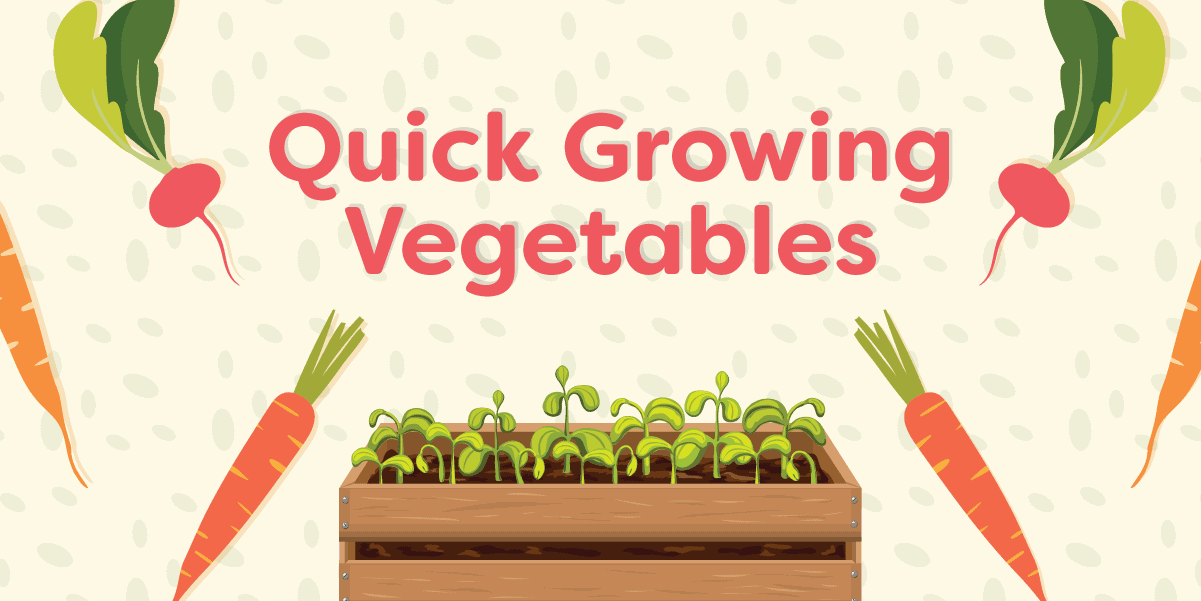Now, more than ever, is a great time to grow your own food! Granted, we say that a lot, but this time we really mean it.
The quick-growing veggies we mention in this blog will help you spend more time at home and less time at the grocery store. Be sure to share what you’re planting with us on Instagram and Facebook!
Just like a doting pet, your veggies love being tucked into a good, warm bed. Let’s see how you can prepare your garden bed ready for planting.
Preparing the Soil
- Till your soil 12 inches deep to loosen up the dirt and give your veggies a good space to spread their roots.
- No rototiller? No problem! Pick up a shovel or pitchfork to break up and turn the soil.
- Your veggies should never be planted in dry soil. Make sure it’s moist when you’re ready to plant.
Green Onions: Great Options
- Green onions — also known as bunching onion—are incredibly easy to grow and taste great in a lot of dishes
- Give your green onion plant 6 inches on each side to grow. Dig a hole 6″ deep and plant. Only 1-2″ of leaves need to pop up above the dirt.
- Don’t firm the soil. Just add water — about 1/4-1/2 gallon of water in a 12 sq. in. space around your plant.
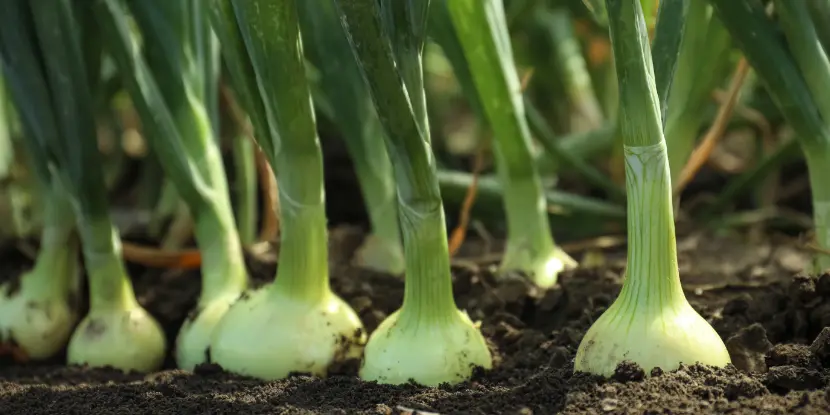
Onions pushing up through the soil.
Crisp Lettuce, Not Limp
- Growing your own lettuce ensures you’ll have the best tasting fresh salads all spring and summer.
- To find out how deep to plant your lettuce, measure your container to find out how deep and how wide you should dig your hole.
- Dig a hole that’s 1″ deeper and at least 2″ wider than the container. Give at least 12″ of space on each side between each lettuce plant.
- Carefully remove your lettuce seedling from its container and place in your hole. Fill in the gaps with dirt and water.
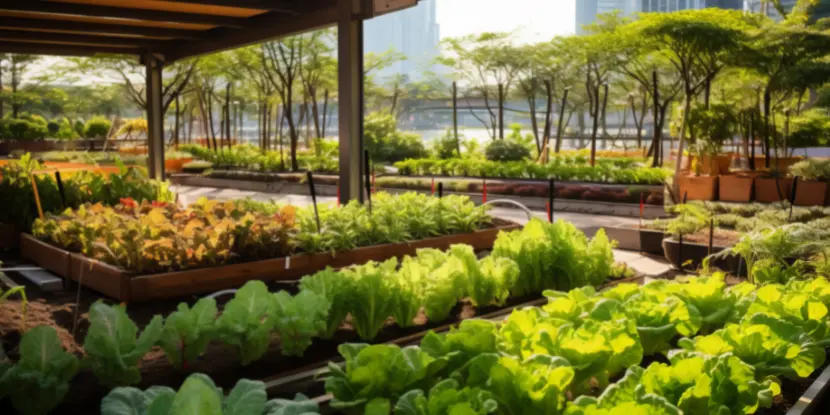
Lettuce growing in raised beds.
The Coolest Cucumbers in Town
One tasty dish for spring and summer is diced cucumbers with feta, fresh cracked pepper, and a vinaigrette. It’s a big reason why cucumbers are a must-have in your garden. Here’s how to plant them.
- Dig a hole slightly larger than the container holding your cucumber plant, and at least 6″ away from the edge of the garden bed.
- Cucumber plants should have about 12″ on each side to grow.
- Gently place your plant in the hole, without damaging or disturbing the roots, and fill in around it with soil.
- Gently water your cucumber plants. Strong jets of water can damage the delicate new plants.
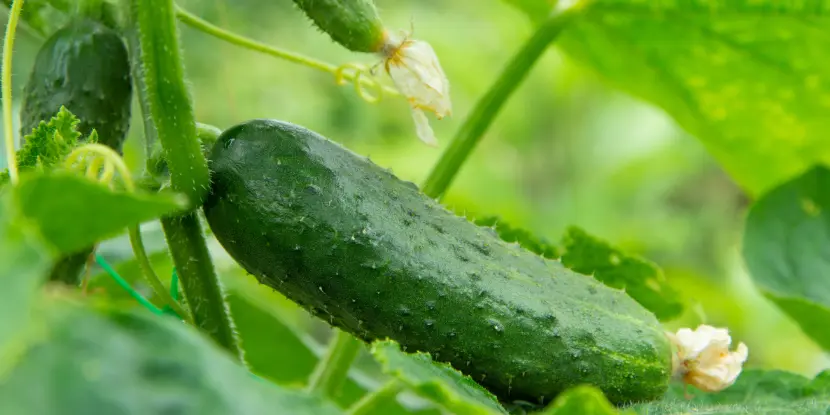
A cucumber ready for harvest.
Scrumptious Squash for Casserole
No summer is complete without summer squash. This, and their quick grow time of 40–50 days, is why we’ve included it as an essential summer vegetable.
- Dig a hole a little larger than the container holding the squash seedling. It will need at least 3 feet of space on each side to expand without crowding out other plants.
- Make sure your soil is moist. Not dry, not muddy, but moist.
- Remove your plant from its container. Take care not to damage its roots.
- Place the squash plant in the hole and fill in around it with soil. Give it a thorough watering.
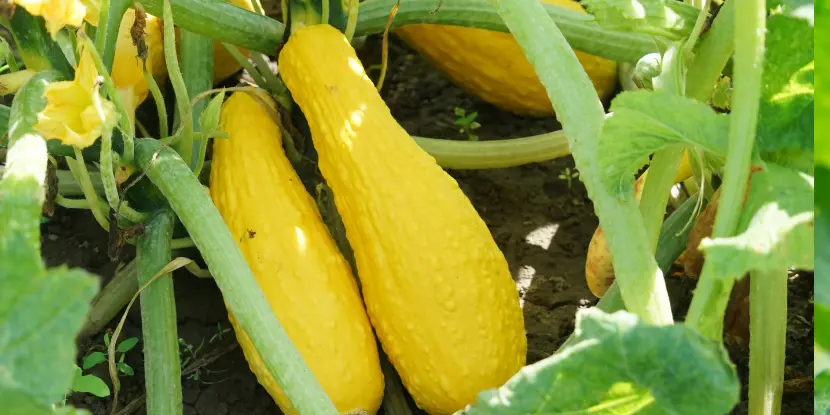
Ripe yellow squash on the vine.
Ravishing Radishes for Whatever
Radishes are scrumptious when roasted with garlic, in a salad, or even pickled! Let’s take a look at the best way to plant them in your garden.
- You can dig your holes ahead of time or dig as you go. Just know that radish seeds should be planted in moist soil in holes 1/2″-1″ deep and 2″ apart.
- If planting multiple rows of radishes or another veggie, space them 12″ apart.
- Plant another round of seeds every 10 days (while weather is still mild) for a continuous harvest of radishes into the early summer.
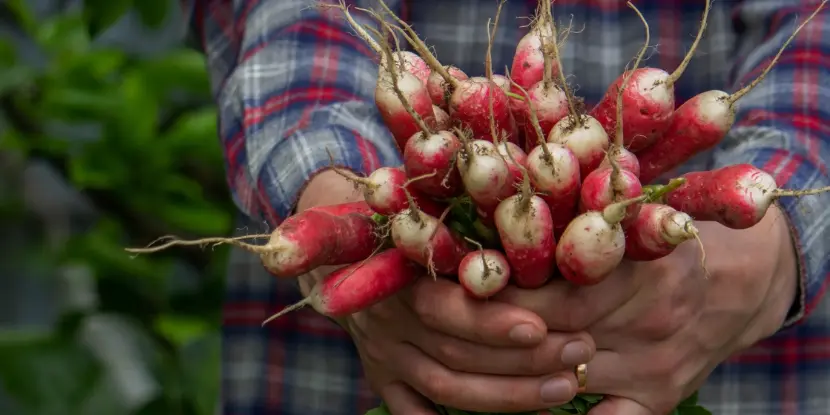
Freshly harvested radishes from the garden.
Watering Is Key
No veggies can grow without water. Gardening experts advise giving your plants 1-inch of water a week, but what does that even mean!? Let’s break it down.
You can crunch the numbers to calculate exactly how much water to give your plants, or you can be cool as your cucumbers and take a simpler approach.
Remember how we wanted to plant our veggies in moist soil? Watering them follows the same concept. When you notice the top layer of soil begins to dry out, water your plants. This is typically every other day, but sometimes more often when it gets hotter.
FAQs: Quick-Growing Vegetables
Q: What are some of the fastest-growing vegetables for Southern California gardens?
Radishes, spinach, and lettuce are excellent choices. They can typically be harvested within 4 to 6 weeks of planting.
Q: How does the climate in Southern California affect vegetable growth?
Southern California’s mild winters and hot summers are ideal for growing vegetables year-round. Quick-growing vegetables especially benefit from the region’s long growing seasons, which allow gardeners to plant and harvest multiple cycles of crops like leafy greens and root vegetables throughout the year.
Q: Are there any special tips for successfully growing fast vegetables?
Maintain consistent soil moisture, especially during the hotter months. Mulch can help retain soil moisture and keep the soil temperature stable. Planting in raised beds or containers can provide better drainage and temperature control for optimal growth.
Q: What type of fertilizers is best for quick-growing vegetables?
We recommend organic fertilizers like fish emulsion and seaweed extracts, which release nutrients more slowly. This reduces the risk of over-fertilization and promotes healthy, steady growth.
Q: Can quick-growing vegetables be grown in partial shade?
Some quick-growing vegetables, like lettuce and spinach, can tolerate partial shade. However, they may grow more slowly or produce smaller yields than in full sun.
Q: How frequently should I water quick-growing vegetables?
Water deeply once or twice a week, depending on weather conditions. Avoid shallow watering, which doesn’t reach the deeper root systems and can promote weak growth.
Q: What are common pests affecting vegetables, and how can they be controlled?
Aphids and slugs are common pests. Neem oil and diatomaceous earth are effective organic solutions for controlling these pests without harming plants.
Q: Can quick-growing vegetables be grown in pots or containers?
Absolutely. Quick-growing vegetables like radishes and spinach are well-suited for container gardening. Ensure the containers have good drainage and are large enough to accommodate plant growth.
Q: When is the best time of day to plant vegetables?
The best time to plant isearly morning or late afternoon to avoid the midday heat, which can stress plants and evaporate water quickly from the soil.
Q: Do quick-growing vegetables need pollination to produce crops?
Leafy vegetables like spinach and lettuce don’t require pollination to produce their edible parts. Some quick-growing vegetables like squash and cucumbers do require pollination for fruit development.
Q: How can I tell when quick-growing vegetables are ready to harvest?
Harvest time varies by vegetable. Radishes may push up through the soil as they grow, indicating readiness, while lettuce leaves can be harvested when they’re large enough to eat. Always check the harvesting guidelines for each type of vegetable.

